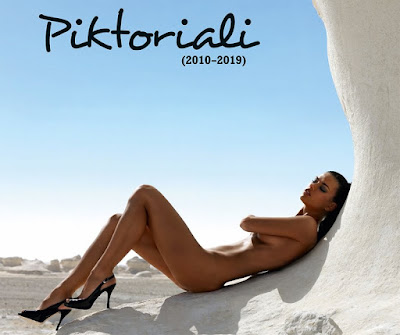The Beauty of Primes – why fixed focal lenses are great for DSLR filming
Why primes?
Well, they make you think.
Think where the position of the camera will be, what perspective you will use
and how you position the elements within the shot in relation to each other and
the viewer. They help you tell stories in a way you want them to. Kinda old
school, but that's what filming is all about anyway (unless you are a
documentary movie-maker, reporter or a sports filmer – in that case you'd
desperately need a zoom). Investing in prime lenses is also a smart move – good
optics will not become obsolete.
What primes to get?
Any primes you like. A lot
of movie-makers like Nikon mount lenses because they offer the f-stop ring and
can be put on popular Canon bodies via adapters as well. Canon EF mount on the
other hand offers the biggest 3rd party selection besides their own amazing
lens line, as almost all lenses from other big manufacturers – Leica, Contax
and Nikon included – fit on a Canon body via an adapter. Sony E mount, commonly
found on the NEX series of their photo/video cameras, seems to be even more
versatile – Leica M39 screw and M mount, old ARRI standard mount, Pentacon and
even PL mount lenses can all be put to good use on the NEX via (often cheap)
optics-free adapters, along with all above mentioned glass from leading DSLR
manufacturers, and more.
Yes, but what brand of lenses is the best for DSLR filming?
The best cinema lenses like
Cookes, Optimos and Master primes are waaay too expensive for regular DSLR
video work. DSLR's own autofocus lenses are an obvious (cheaper) option, but
often sport not-so-precise distance markings and focusing rings without hard
stops.
One of the best
price-performance gems out there is the Zeiss Compact Prime CP.2 line*. These
are re-housed Zeiss ZE/ZF.2 prime lenses, a sort of a hybrid between cine and
photo glass. They still have the characteristics of photography lenses, but
with some very well done cinema modifications, such as 14 blade iris for
perfectly round bokeh, color matching, interchangeable mounts (5 of them at the
moment) and built-in geared rings for focusing. They are built like a tank, but
still relatively light and with full frame sensor coverage – a true rarity
among today’s film lenses, which are usually designed for smaller standard formats
like Super 35.
Can I use cine lenses for still potography?
Yes, cine lenses can be used for still photography just like any other
lens, but there are certain physical limitations. One of the issues with cine
lenses is their ergonomics. They tend to be big, heavy and bulky compared to
regular DSLR lenses and their focusing rings are designed for follow focus
gear, preferably with a focus puller to do the job, not via autofocus. They
also have geared f-stop rings for iris pulling and go dark when stopped down.
Communication with modern DSLR’s does not exist with these lenses, so EXIF
remains erratic.
What do professional movie-makers suggest?
Ryan Koo wrote this on his
awarded NoFilmSchool blog: »When it comes to assembling a kit of lenses,
most professional filmmakers like to choose one brand and stick with it, so the
visual characteristics of the lenses match up from shot-to-shot; with the same
brand lenses in your kit, the lenses will also handle similarly”. All
professional cine lenses are color-matched to each other, have the same front
thread, same body size and quite often same maximal f-stop. Whereas the uniform
front thread and the equal focusing gear ring can be permanently added to a kit
of any manual focus lenses through a specialized company such as Duclos (the lens becomes
»cine-moded« and its f-stop ring gets »de-clicked« so it rotates uniformly
without stops), the color matching process cannot be applied.
My own personal preference?
A black case of 7 or 8 primes from the same make, with focal lengths ranging
from 18mm to 100mm including a couple super speeds at T/1.3 or T/1.5. If I had to pick just 3 primes for video
work, they would probably be 25mm, 50mm and 100mm – a perfect starter kit for
any aspiring filmmaker.
* I do not
work for Carl Zeiss AG. They did sent me a pack of blue stickers from
Oberkochen once though - for my daughters. Being a long-time Canon Ambassador I
love Canon’s professional L glass and use it extensively for filming and still
photography.


